The Easiest Wallpaper to Install – And I’ve Tried Them All
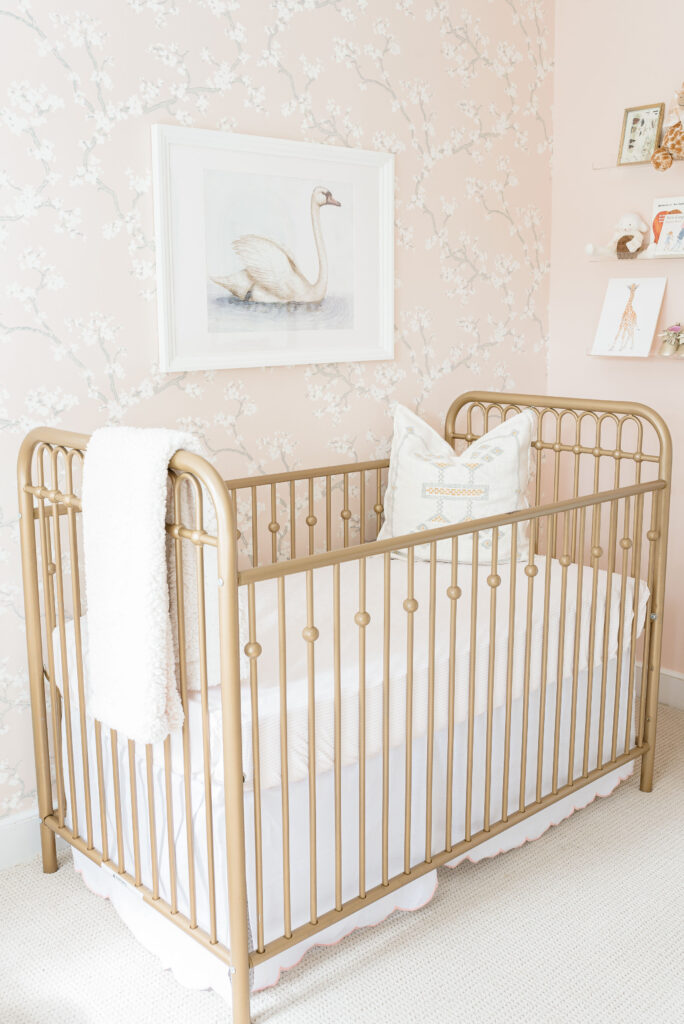
Wondering which type is the easiest wallpaper to install? I’ve tried pretty much every variety of wallpaper out there, from peel and stick, to traditional paste the paper, as well as paste the wall and self-adhesive versions. I’m here to tell you that, when it comes to the ease of installation, all wallpaper types are NOT created equally. And the easiest type of wallpaper to install might actually surprise you (hint: it’s not peel-and-stick).
Here, I’ve listed out the easiest types of wallpaper to install, from simplest to most difficult, so you can whittle down your wallpaper options based on your personal patience level 🙂
Easiest Wallpaper To Install – An Overview
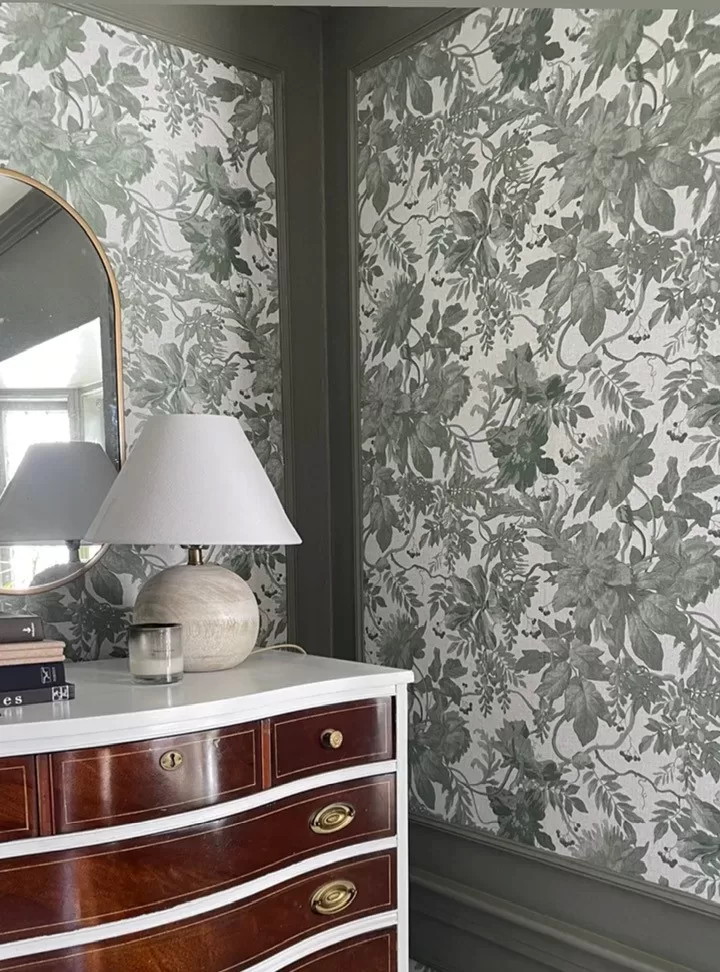
I’m going to come right out of the gate and say that all forms of traditional wallpaper with paste are way easier to install than peel-and-stick. That’s primarily because, when you use paste, you can slide the wallpaper into place to adjust it, which you will inevitably need to do when installing wallpaper. With peel-and-stick, because it immediately adheres to the wall, you can’t slide it. So to re-position the wallpaper, you need to peel the whole sheet off the wall, reposition it, and try again. This also makes it hard to press bubbles out of the paper and smooth out creases, and, if you do it enough times, makes the paper less sticky.
It reminds me of putting a screen protector on a cell phone. You get that one shot to line it up right, and if you don’t get it, you have to live with that crooked screen protector and all the little bubbles and dust underneath. With peel and stick wallpaper, you can try again to reposition it, though, but only a few times or it’ll lose its stick.
All that said, there are still multiple types of wallpaper that requires paste, and each requires a different technique, some of which are harder than others. Here’s an overview of those.
The Easiest: Non Woven / Paste The Wall
Hands-down, the easiest wallpaper to install is nonwoven wallpaper. That’s because with nonwoven wallpaper, you can use what I consider to be the best wallpaper installation method: paste the wall.
With paste the wall wallpaper, you simply use a paint roller to apply the paste directly to the wall, and then you press the wallpaper over the paste and smooth it out.
Paste the wall wallpaper can also be done alone. I used paste-the-wall wallpaper in my dining room, and I did the entire room by myself in about four hours.
The good news is that most wallpaper these days is non-woven (which means it has an added vinyl layer that makes it more durable and resistant to moisture) so you should have plenty of options.
Not all wallpaper is non woven though, so be sure to check the package before you dive in here. Wallpaper made from grasscloth or actual paper needs a different technique.
My Must-Have Wallpaper Tools
Also Easy: Paste the Paper Wallpaper
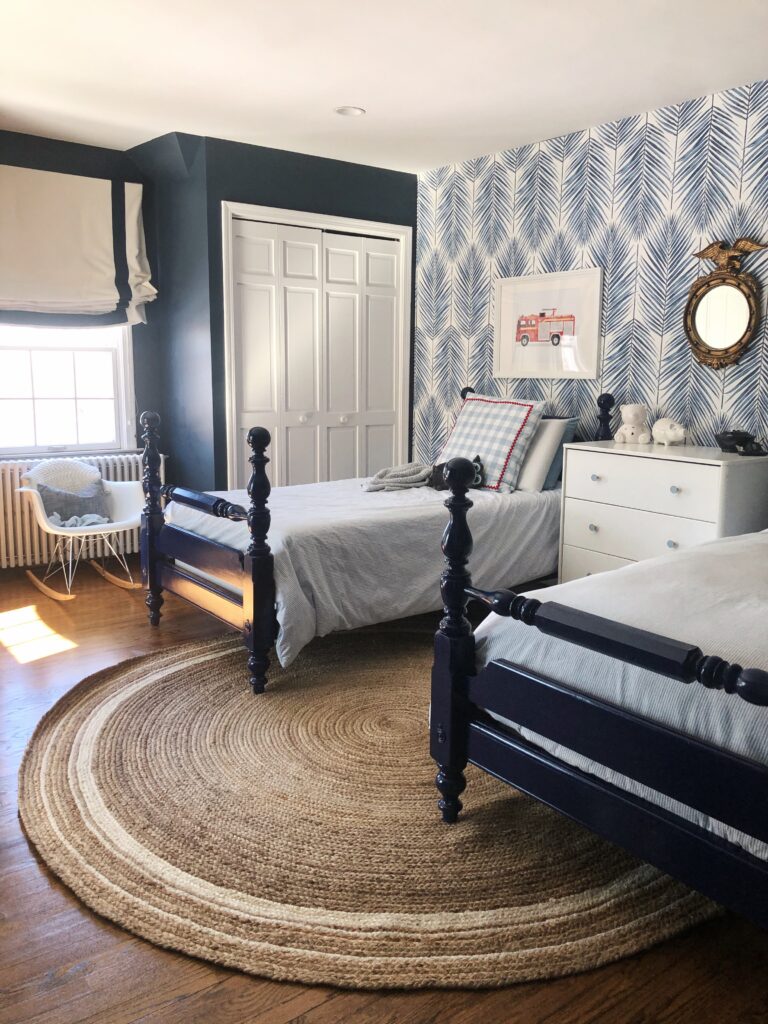
Paste the paper wallpaper is not as easy as paste the wall, but it’s not all that hard, either.
The biggest difference to me, and the reason I think it’s more difficult, is because when you paste the paper, you have to set up a pasting table, or lay the paper out on the floor. Then, you need to make sure you get the wallpaper paste all the way to the edges of the wallpaper, and for me, that always means I get it on the floor or on the pasting table. So, then I either have to wipe it up before I paste another sheet of wallpaper, or I just have to wipe down the wallpaper thoroughly once it’s hung up. It just adds an extra step.
I usually like to have a helping hand if I’m doing paste the paper, because the wallpaper gets a bit heavier with the paste which makes it a bit more unwieldly to work with.
Overall, it’s not a bad project, though. I used the paste the wall technique in both my sons’ and daughter’s room before I knew I could paste the wall for nonwoven paper, and it took a couple of hours to wallpaper an accent wall in each room.
Moderately Easy: Pre-pasted Wallpaper
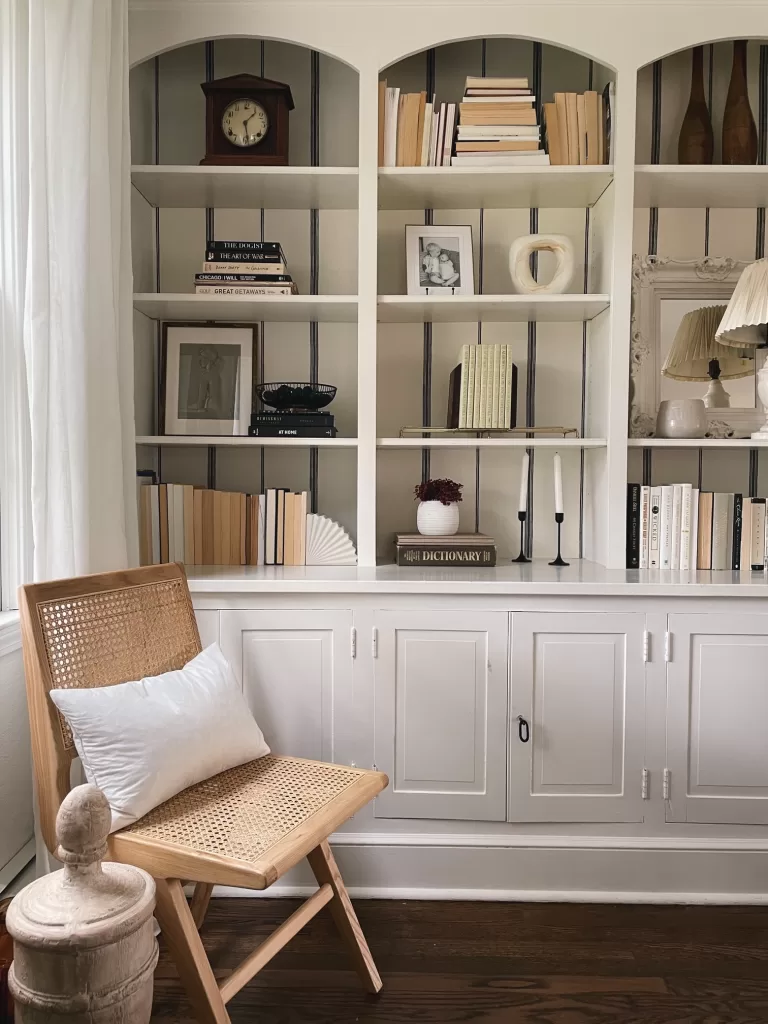
Pre-pasted wallpaper is tied with paste the paper in terms of ease, for me.
With pre-pasted wallpaper, you just have to spray the back of the wallpaper with water (I use a spray bottle) to activate the paste, then you stick it to the wall.
There are some pros to this, the biggest being you don’t need as many tools and cleanup is super easy.
But, the reason I think it’s still harder than paste the wall is because it can be hard to tell if you’ve sprayed enough water on the paper, and I usually end up missing some spots, which means I have to go back and re-wet certain areas after I’ve hung each panel. Pre-pasted wallpaper also doesn’t slide into place quite as easily as wallpapers that require paste, I think because the backing dries quickly, so it’s less slippery than wallpaper paste.
I used pre-pasted wallpaper to line the back of our bookcases in our living room (see photo above) and I got the job done in one naptime.
Overall, it’s still a heck of a lot easier than my least favorite wallpaper to install, which is….
Super Annoying and You Might Get in a Fight With Your Spouse: Peel-and-stick or self-adhesive wallpaper

I tried peel-and-stick wallpaper in our entryway before I did the board and batten that’s in there now, and let me tell you: never again. I actually took it all down and went in a totally different direction about halfway through the project.
It was probably the most frustrated I’ve ever been during a DIY project. There are a few things that make peel-and-stick wallpaper the most difficult wallpaper to install (to me at least).
The first is that you can’t slide peel and stick wallpaper. With pasted wallpaper, the paste allows the wallpaper to slide around on the wall so you can position it easily. Peel-and-stick wallpaper, though, is a one-shot deal. You line it up the best you can and stick it to the wall, but if you don’t get it right, you have to peel the sheet off the wall and try again. This is both frustrating, and it eventually starts to make the paper less sticky.
I also had a really hard time smoothing bumps out of peel-and-stick wallpaper (see the photo above). Again, I think this has something to do with the fact that you can’t slide it around. With pasted papers, I just lift up the area where there’s a bump and lay it back down, and the bumps work themselves out, and if they don’t, I can just smooth them away with a wallpaper smoother.
That said, I have also used peel-and-stick wallpaper to make a little house-shaped decal on the wall of our playroom for my daughter, and that gave me no problems, I think because it was a small area and I wasn’t going for perfection in the playroom, so I left some bumps and air pockets in there. I’d use it again in small projects, perhaps for a bookcase backing or something, but not for a whole room.
Other things that make wallpaper harder to install
The type of paper you choose isn’t the only thing that will determine how hard or easy it is to install, something I learned a few months ago when I installed wallpaper in my sons’ room.
The paper I chose had a plaid pattern, and it turned out to be one of the hardest wallpaper jobs I’ve done. The reason is because the paper is basically gridlines, which makes it very easy to tell if the wallpaper isn’t perfectly straight (or if your walls aren’t perfectly straight, which mine are not).
When you use wallpaper like a botanical print, or chinoiserie, or anything that’s not so linear, the pattern is busy and detailed enough that it hides minor imperfections easier than paper that’s got lots of lines, Just something to consider if you’re planning to install it yourself.
FAQS
Why can you paste the wall with nonwoven wallpaper?
Traditional wallpaper that’s made with actual paper or a natural material can expand when wet, which it why your mom probably had to soak her wallpaper in the tub before installing it. While that’s not really necessary anymore, natural fibers still need some time to adapt to the moisture of the wallpaper paste before you hang them on the wall, which is why you paste the paper first, to give the paper time to absorb the paste.
Nonwoven wallpaper doesn’t need that time to expand, so you can paste the wall directly.






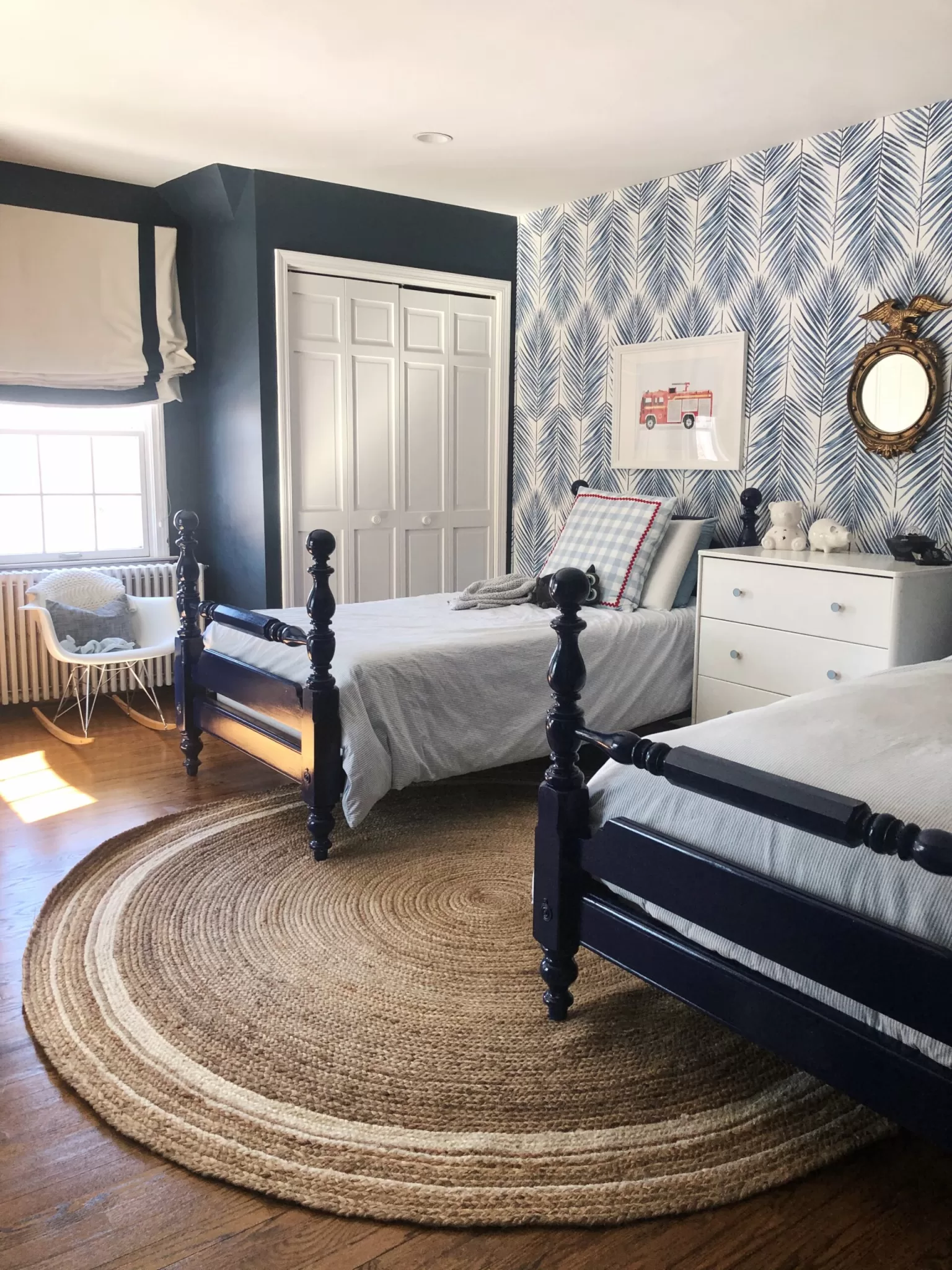
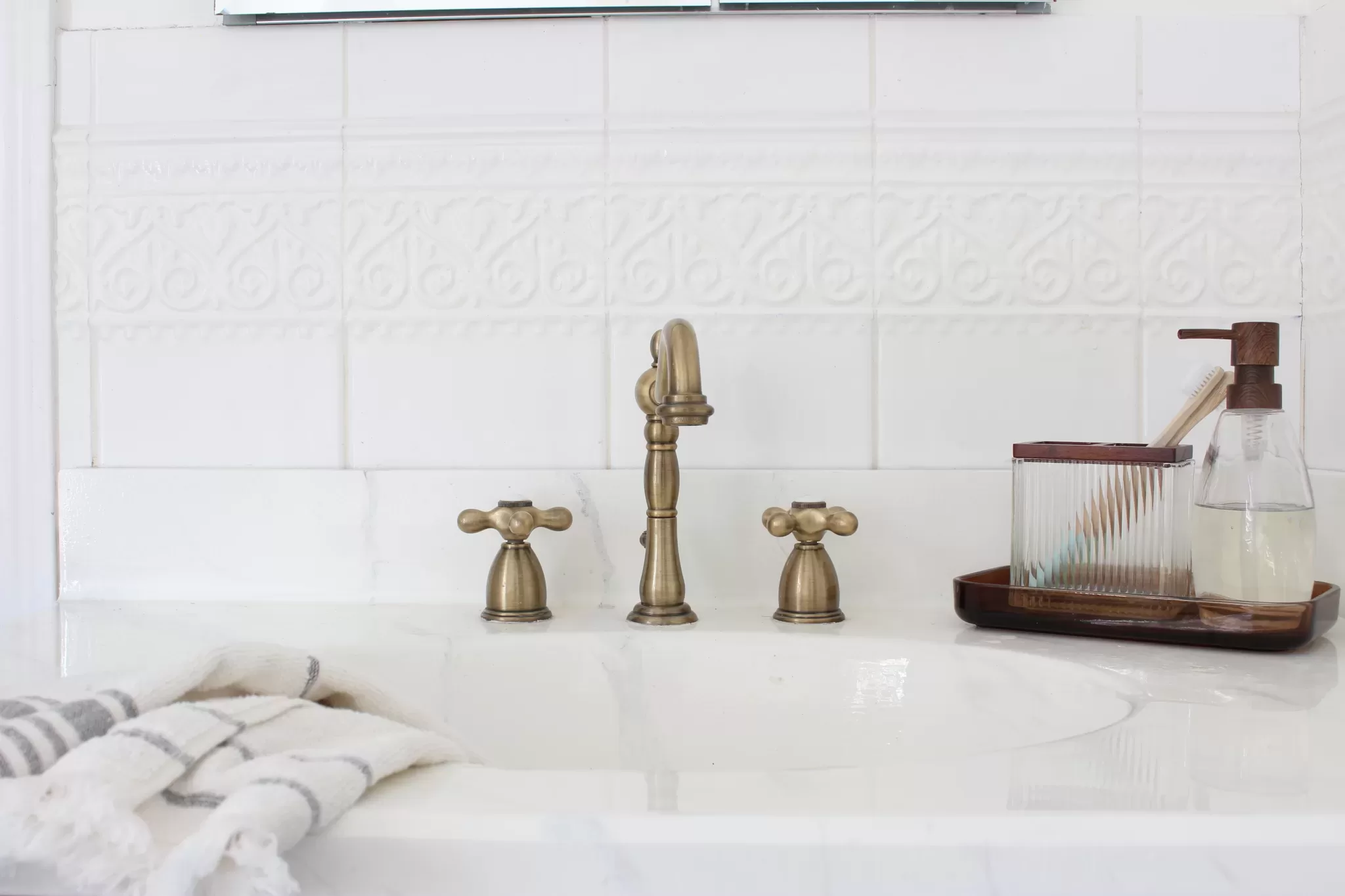
Seriously thank you for this. I’ve been staring at wallpaper options for days and almost bought some peel and stick. I saw there was a lot of reviews saying it didn’t stay up well and fell down. Thanks for all the great info!
Just read your method for installing pre-pasted wallpaper and let me tell you that you are not doing it right using a spray bottle! I thought “Oh my word, let this old dog teach a trick” lol. There are little troughs that are long and narrow where you fill them with water. Cut your paper strip, then roll it up loosely from the bottom so that the top edge is onbthe outside of the roll to grab. Submerge that roll in the water and let it relax… it sorta unwinds so water goes throughout the layers. Sit about 60 seconds (you can feel when glue is “activated”) then pull it up letting the water run off back into the trough and go straight to the wall with it. I blaze through wallpaper this way. Have fun everyone!
Yes I”m not a fan!!